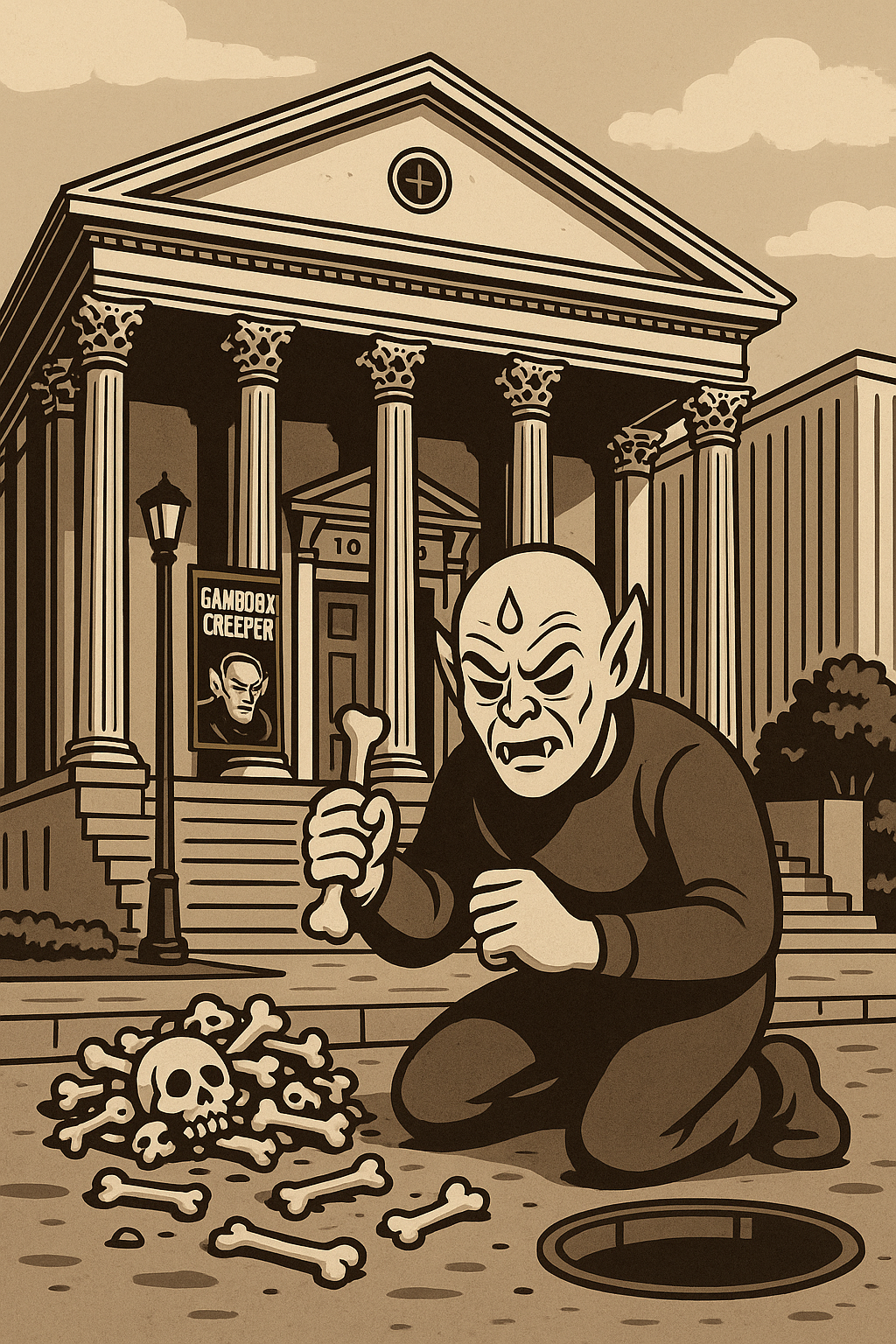The Legend Arises

Under the weak glow of a crescent moon in late November 1949, a few students walking the quiet paths behind the historic Longstreet Theatre at USC reported seeing something in the shadows.
What they described was a figure, tall and hunched, its skin shimmering silver in the dim light. In the center of its forehead glowed a third eye—dark, unblinking. One of the students later called him simply “the Sewer Man.”
The creature seemed transfixed by something on the ground. As the students drew closer, they saw shredded fists of chicken: feathers scattered across the concrete, chaos of what looked like a violent meal. Then it noticed them. Its third eye flicked open. Without a word, it bolted into a nearby storm‑tunnel entrance and vanished into the maze of steam‑pipes and service vaults beneath the campus.
Campus security and local police searched the underground network for nights on end, determined to find this “man” or creature. They found scraps of silver skin, one discarded hob‑nailed boot, and a single footprint that glowed faintly in ultraviolet light used by investigators. A dead end. The tunnels were sealed off. But the legend had already taken root. Students whispered: If you’re alone after the game, don’t walk near the tunnels. He watches.Over the years, more sightings followed: strange screams echoing beneath the service manholes, silver reflections along drains, footprints in mud next to the athletics yard that vanished at the edge of the grass. Each time, the witnesses described the same features—a third eye, a silvery tone, a hunger for chicken remains (perhaps mocking the campus mascot?), and a ghost‑like ability to vanish.
Some say the creature is tied to an old student initiation game that went wrong. Others say the silver skin is chemical contamination from the steam tunnels or some experiment gone awry. But the Creeper’s signature remains: since 1949, he’s been waiting… watching… wearing garnet and black.


